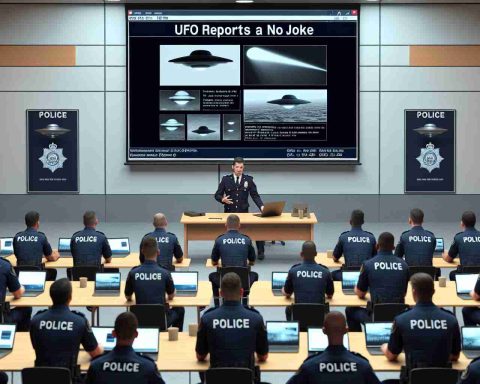Revolutionizing Atmospheric Research
On January 18, a powerful satellite known as Tianlu-1 successfully reached its designated orbit, marking a significant achievement for China’s private space industry through GalaxySpace. This launch also included two additional satellites, showcasing the nation’s growing capabilities in aerospace technology.
Tianlu-1 is particularly impressive with its ability to conduct multi-parameter detection and high-resolution observations, enabling scientists to examine the middle and upper layers of the atmosphere. These regions, situated between conventional aircraft altitudes and the lower boundaries of space, have largely remained a mystery, and the satellite aims to change that.
The advanced satellite technology promises to gather critical data concerning atmospheric conditions such as density, temperature, and composition. This information is vital for enhancing extreme weather predictions and advancing our understanding of climate change.
According to GalaxySpace experts, the innovative limb-sounding technique used by Tianlu-1 allows it to collect layered atmospheric profiles from its specific orbital altitude. This method involves analyzing spectral data to extract essential physical parameters from atmospheric emissions.
As future missions unfold, Tianlu-1 will also contribute to improving China’s satellite navigation and communication systems. The rich dataset generated by this satellite is expected to aid in the development of precise atmospheric models and further studies into environmental changes, thus paving the way for groundbreaking advancements in scientific research.
Transforming Atmospheric Understanding for a Sustainable Future
The launch of the Tianlu-1 satellite underscores a pivotal moment in atmospheric research that resonates beyond the boundaries of science. As a society grappling with climate change, the insights gathered from this advanced technology will shape policies and influence daily life. Enhanced weather predictions can lead to proactive disaster management, safeguarding communities from the unpredictability of extreme weather events.
The implications aren’t confined to mere forecasting; the cultural narratives surrounding environmental responsibility are poised to shift. As citizens become increasingly aware of atmospheric conditions and their direct effects on health and safety, public discourse may lean more heavily on sustainable practices and climate resilience. Thus, Tianlu-1 represents not only a technological milestone but also a cultural awakening towards greater environmental stewardship.
Moreover, the global economy is likely to benefit significantly from the data provided by Tianlu-1. Precision in atmospheric modeling can drive efficiencies in sectors such as agriculture and transportation, where climate impacts loom large. For instance, farmers could optimize planting schedules, while airlines could enhance routes for fuel efficiency, reducing both costs and environmental footprints.
Looking toward the future, the ecological ramifications of improved atmospheric science cannot be overlooked. By gaining a comprehensive understanding of the atmosphere’s layers, researchers will be better equipped to tackle urgent issues like air quality degradation and greenhouse gas emissions. Ultimately, the long-term significance of Tianlu-1 extends far beyond its scientific contributions, positioning it as a catalyst for global change—economically, culturally, and environmentally.
Unlocking the Secrets of Our Atmosphere: Tianlu-1’s Impact on Climate Science
Introduction to Tianlu-1
On January 18, China’s private space sector celebrated a milestone with the successful launch of the Tianlu-1 satellite, executed by GalaxySpace. This groundbreaking satellite not only signifies advancements in aerospace technology but also brings the promise of enhanced atmospheric research capabilities. Alongside Tianlu-1, two other satellites were launched, marking a progressive step for China’s increasing footprint in space exploration.
Key Features of Tianlu-1
Tianlu-1 is equipped with advanced multi-parameter detection capabilities, allowing it to conduct high-resolution observations of the middle and upper layers of the atmosphere. These regions are crucial yet often overlooked in atmospheric science, lying between commercial aircraft cruising altitudes and the boundary of outer space. Tianlu-1 is set to provide unprecedented insights into these layers, which could significantly alter our understanding of atmospheric dynamics.
Current Use Cases
1. Extreme Weather Prediction: The data collected by Tianlu-1 is vital for improving forecasting accuracy of extreme weather events. By providing detailed atmospheric information, it helps meteorologists in formulating more precise predictions.
2. Climate Change Research: Tianlu-1’s ability to monitor atmospheric composition and temperature supports studies on climate change, offering essential information that can inform global climate policies.
3. Satellite Navigation and Communication: As Tianlu-1 gathers data, researchers plan to leverage its findings to enhance China’s satellite navigation and communication systems, crucial for domestic and international applications.
Advantages of the Limb-Sounding Technique
The limb-sounding technique utilized by Tianlu-1 facilitates the collection of layered atmospheric profiles, offering several benefits:
– High-Resolution Data: This method allows for detailed analysis of atmospheric emissions, leading to accurate reconstructions of vertical atmospheric profiles.
– Real-Time Monitoring: The ability to gather real-time data enhances capabilities for atmospheric monitoring, crucial for rapid response during extreme weather conditions.
Pros and Cons
Pros:
– Enhanced understanding of atmospheric layers.
– Improved weather prediction models.
– Contribution to climate change research.
– Strengthening of satellite navigation systems.
Cons:
– High operational costs associated with satellite launches.
– Dependence on continuous funding for future missions.
– Potential impacts on frequency allocations for other satellites.
Limitations and Challenges
While the Tianlu-1 satellite offers significant advantages, there are inherent limitations:
– Data Interpretation: The complexity of atmospheric data requires sophisticated algorithms and models for analysis, which can be time-consuming.
– Operational Lifespan: Like all satellites, Tianlu-1 will have a finite operational lifespan, which necessitates planning for successors.
Pricing and Market Analysis
The investment in Tianlu-1 reflects a broader trend in the growing market for satellite technology. With the increasing importance of climate change data and weather prediction, the demand for such advanced satellites is expected to rise. The costs associated with launching and maintaining such satellite systems are substantial, often reaching into the hundreds of millions of dollars. However, the value of the data they produce often justifies the expenditure, especially in mitigating the impacts of climate-related disasters.
Future Trends and Predictions
As countries and companies around the world enhance their capabilities in satellite technology, we can expect a new era of atmospheric observation. The data produced by Tianlu-1 may lead to:
– Improved international collaboration on climate research and atmospheric studies.
– Increased innovation in satellite technology that could lower launch costs and improve performance.
– A more nuanced understanding of the Earth’s atmosphere, driving policy changes to combat climate change.
Conclusion
The Tianlu-1 satellite represents a significant leap forward in atmospheric research, promising to unveil mysteries of the upper atmosphere and enhance our understanding of climate change. As the satellite gathers data, its contributions will lead to advanced weather forecasting, improved climate models, and enhanced technological infrastructure for navigation and communication. The successful launch of Tianlu-1 affirms China’s commitment to staying at the forefront of space exploration while contributing vital data needed to tackle pressing environmental challenges.
For more on space exploration and related technologies, visit GalaxySpace.




















